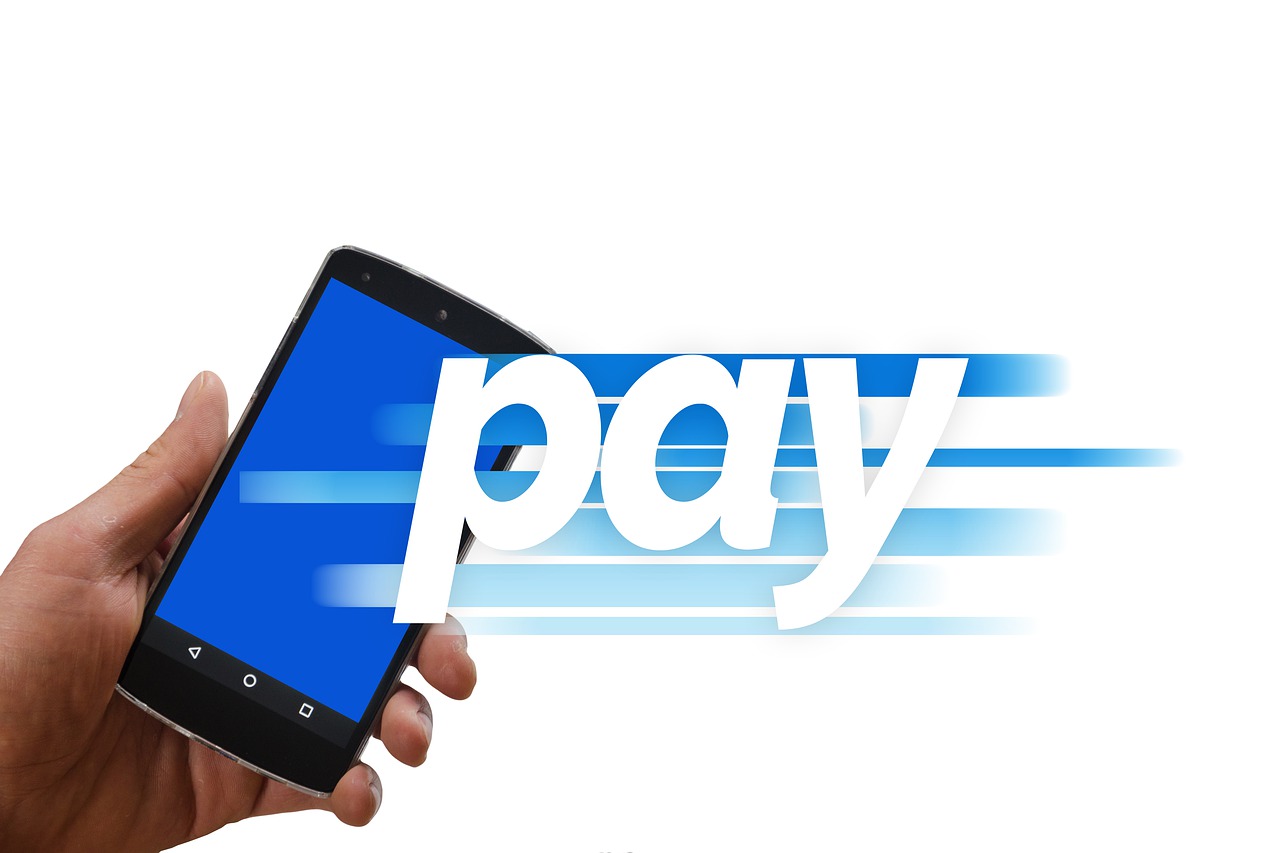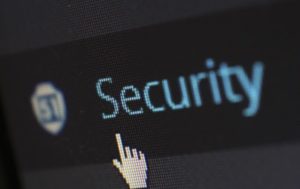How Generative AI Is Reshaping Creative Industries

The rise of generative AI is transforming the creative world in ways that once seemed impossible. Once the exclusive domain of human imagination, fields like music, design, art, and storytelling are now seeing a powerful collaboration between technology and creativity. From tools that generate visual art in seconds to AI models that compose music or write screenplays, generative AI is not just a novelty—it’s becoming an essential part of modern creative workflows. As these technologies mature, they are redefining how ideas are conceived, refined, and shared across industries.
A New Era of Artistic Collaboration
Generative AI isn’t replacing human artists—it’s empowering them. Graphic designers can use AI to quickly generate concept drafts, experiment with different styles, or enhance visuals through smart suggestions. Writers are using AI to brainstorm plotlines, edit prose, or generate character dialogue. Even musicians are experimenting with AI-generated melodies or harmonies to break creative blocks. This fusion of machine intelligence and human direction speeds up the creative process while unlocking new forms of expression that might not have been possible before.
Democratizing Access to Creativity
One of the most powerful aspects of generative AI is how it lowers the barrier to entry for creative work. People with limited technical or artistic training can now use intuitive platforms to produce professional-looking visuals, compelling music, or even complex animations. This has created space for new voices to emerge—people who may not have had access to expensive tools or formal education can now bring their ideas to life with just a few prompts. As a result, creative industries are seeing an influx of diverse perspectives and bold experimentation.
Transforming Media, Advertising, and Design

In marketing and media, generative AI is streamlining workflows and unlocking personalization at scale. Brands can now create multiple versions of ads, tailored to specific audiences, using AI-generated text, visuals, and even voices. In fashion, AI is helping designers visualize entire collections and trends before production. In architecture and product design, it’s speeding up prototyping and ideation, offering endless variations that clients can review in real time. These applications are turning AI into a creative partner, not just a productivity tool.
Challenges and Ethical Questions
As generative AI becomes more embedded in the creative process, it also raises questions about originality, ownership, and ethics. Who owns an AI-generated image? How should artists be credited if their work is used to train these models? What are the limits of creative authenticity when machines play such a central role? These are ongoing conversations in the industry, as creatives, developers, and regulators work together to set standards that balance innovation with fairness and integrity.
Generative AI is not just a trend—it’s a transformative force reshaping the foundation of creative industries. Combining machine efficiency with human insight opens new doors for experimentation, collaboration, and expression. While challenges around ethics and authorship remain, the benefits of enhanced accessibility, accelerated creativity, and global inclusivity make it clear that generative AI is here to stay—and its role in shaping the future of creativity is only just beginning.…











 Finally, buying followers won’t necessarily lead to more sales. While it can be a great way to get the ball rolling and give you a boost in terms of visibility, it won’t guarantee more sales. You still need to engage with your audience actively, provide quality content, and use other marketing strategies to increase sales. Also, it’s important to remember that improving your following is only one part of the equation; converting those followers into customers requires much work and effort.
Finally, buying followers won’t necessarily lead to more sales. While it can be a great way to get the ball rolling and give you a boost in terms of visibility, it won’t guarantee more sales. You still need to engage with your audience actively, provide quality content, and use other marketing strategies to increase sales. Also, it’s important to remember that improving your following is only one part of the equation; converting those followers into customers requires much work and effort.

 Finally, it’s always a good idea to take notes on every conversation that you have with the customer support team. This way, you can easily refer back to their responses and compare them if they give different answers at different times. Additionally, taking notes also helps you remember all the details of your problem, which can be useful when filing for a dispute or a complaint. In fact, it can also be your reminder if the provider doesn’t do what they promised in the first place.
Finally, it’s always a good idea to take notes on every conversation that you have with the customer support team. This way, you can easily refer back to their responses and compare them if they give different answers at different times. Additionally, taking notes also helps you remember all the details of your problem, which can be useful when filing for a dispute or a complaint. In fact, it can also be your reminder if the provider doesn’t do what they promised in the first place.
 One of the best ways to develop new ideas is to push yourself to be creative. And one way to do this is to experiment with extremes. For example, if you’re working on a color scheme, try using the opposite of what you would typically use. Or, if you’re working on a layout, try something different from what you’re used to. By pushing yourself to try new things, you’ll be able to come up with truly unique ideas.
One of the best ways to develop new ideas is to push yourself to be creative. And one way to do this is to experiment with extremes. For example, if you’re working on a color scheme, try using the opposite of what you would typically use. Or, if you’re working on a layout, try something different from what you’re used to. By pushing yourself to try new things, you’ll be able to come up with truly unique ideas.



 The fundamental purpose of face masks is to protect the wearers from harmful bacteria, viruses, and other disease causing microorganisms. Also, it prevents the wearer from transmitting the infections to others. This is especially important when dealing with asymptomatic persons who are carriers of diseases like COVID-19 but show no signs yet can pass the conditions to others.
The fundamental purpose of face masks is to protect the wearers from harmful bacteria, viruses, and other disease causing microorganisms. Also, it prevents the wearer from transmitting the infections to others. This is especially important when dealing with asymptomatic persons who are carriers of diseases like COVID-19 but show no signs yet can pass the conditions to others. The smart masks are different from the ordinary covers in that they have extra features that give users convenience. For example, the MaskFone has wireless earbuds and a built-in microphone. These allow the wearers to listen to music and take phone calls with no need to remove the masks. With the mic, the wearers deliver crystal clear audios thus can converse well with others.
The smart masks are different from the ordinary covers in that they have extra features that give users convenience. For example, the MaskFone has wireless earbuds and a built-in microphone. These allow the wearers to listen to music and take phone calls with no need to remove the masks. With the mic, the wearers deliver crystal clear audios thus can converse well with others.


 Here, I will give a trick specifically aimed at all of you so that your predictions will be more maximal and not experience significant losses, including:
Here, I will give a trick specifically aimed at all of you so that your predictions will be more maximal and not experience significant losses, including: The first winning trick is to analyze the two teams before competing. Usually, you should do this trick two or three days before so that your chance of winning will be high. What needs to be analyzed? The first is, the last five meetings are two teams, then sign up for players, coach strategies, and several other things. For more straightforward analysis, you can read predictions from the results of upcoming matches based on site prediction information. Also, reading prediction sites, such as
The first winning trick is to analyze the two teams before competing. Usually, you should do this trick two or three days before so that your chance of winning will be high. What needs to be analyzed? The first is, the last five meetings are two teams, then sign up for players, coach strategies, and several other things. For more straightforward analysis, you can read predictions from the results of upcoming matches based on site prediction information. Also, reading prediction sites, such as 
 When you are choosing your marketing company, you are supposed to conduct your research and know some of the best marketing firms that are situated in your region. For instance, when you are conducting your research, you are likely to find some of the best marketing companies such as Edmonton Marketing company. Also, you need to gather all the relevant information concerning marketing firms that will guide you when making your selection.
When you are choosing your marketing company, you are supposed to conduct your research and know some of the best marketing firms that are situated in your region. For instance, when you are conducting your research, you are likely to find some of the best marketing companies such as Edmonton Marketing company. Also, you need to gather all the relevant information concerning marketing firms that will guide you when making your selection. Most successful entrepreneurs consider selecting experienced companies because they know the best marketing strategies to consider based on the type of your business. That is why when you are choosing a marketing company you need to check on their background to know how long they have been operating. But it is also advisable to avoid hiring newly-formed companies. Make sure that you choose a marketing company that has been in business for more than six years.…
Most successful entrepreneurs consider selecting experienced companies because they know the best marketing strategies to consider based on the type of your business. That is why when you are choosing a marketing company you need to check on their background to know how long they have been operating. But it is also advisable to avoid hiring newly-formed companies. Make sure that you choose a marketing company that has been in business for more than six years.…



 Many organizations have come up to promote the use of solar energy as an alternative for homes and companies. If you are lucky to have such an organization in your area, it is advisable to work with them. They offer the best plans in a package and help you through the installation process. They have the best experts who have researched on the best solar technology to suit the needs of the people in a certain region.
Many organizations have come up to promote the use of solar energy as an alternative for homes and companies. If you are lucky to have such an organization in your area, it is advisable to work with them. They offer the best plans in a package and help you through the installation process. They have the best experts who have researched on the best solar technology to suit the needs of the people in a certain region. The good thing is that the experts will install the solar energy devices for you. Also, they will train you and other home users on how to get the best from the new program. If the steps are followed well, then it is time to enjoy the
The good thing is that the experts will install the solar energy devices for you. Also, they will train you and other home users on how to get the best from the new program. If the steps are followed well, then it is time to enjoy the 
 Banks are the most delicate places one should think of when it comes to security issues. Funds that kept in the bank are worth large sums of money that the bank owners would not afford losing. Therefore, when you choose software for the users, you need to test whether it is vulnerable to threats. Also, the people you employ to run and monitor the software should be highly trained with integrity to prevent loose of important information of the bank. You also need to ensure that the banking software is capable of the promising safety of the users’ account.
Banks are the most delicate places one should think of when it comes to security issues. Funds that kept in the bank are worth large sums of money that the bank owners would not afford losing. Therefore, when you choose software for the users, you need to test whether it is vulnerable to threats. Also, the people you employ to run and monitor the software should be highly trained with integrity to prevent loose of important information of the bank. You also need to ensure that the banking software is capable of the promising safety of the users’ account. When you are initiating a new software in a bank, you are aiming at fast delivery of services to the users. Online Banking Software is an example of software used to deliver services fast to its users. The software is considered inappropriate if it does not improve performance in the bank. You need to choose a software that will provide capability to give necessary information to the customer whenever they access their accounts.
When you are initiating a new software in a bank, you are aiming at fast delivery of services to the users. Online Banking Software is an example of software used to deliver services fast to its users. The software is considered inappropriate if it does not improve performance in the bank. You need to choose a software that will provide capability to give necessary information to the customer whenever they access their accounts.
 When you create your account, you will be given a fax number, for free, as a part of the service. Since this number is digital, you can immediately start using it, without having to deal with complex physical setups and arduous installations. When choosing a number, you can opt for a toll-free number or a local one. This choice usually depends on the availability of numbers in your local area.
When you create your account, you will be given a fax number, for free, as a part of the service. Since this number is digital, you can immediately start using it, without having to deal with complex physical setups and arduous installations. When choosing a number, you can opt for a toll-free number or a local one. This choice usually depends on the availability of numbers in your local area. Last, but not least. Another great feature of Google faxing is the ability to integrate it with your smartphone. These days, you can easily find a plethora of smartphone apps, which allow you to enjoy the majority of Google fax services. With these applications, you can instantly receive notifications of incoming faxes. As well as view and forward them. You can also compose new fax documents or sign them electronically.
Last, but not least. Another great feature of Google faxing is the ability to integrate it with your smartphone. These days, you can easily find a plethora of smartphone apps, which allow you to enjoy the majority of Google fax services. With these applications, you can instantly receive notifications of incoming faxes. As well as view and forward them. You can also compose new fax documents or sign them electronically.
 One of the features that range finders have is waterproof. They have been designed to ensure that water does not interfere with it. Most of the range finders can be used during the rainy season. It is because of the waterproof feature. The range finder is coated with armor metal to prevent water from interfering with it. When buying the range finder make sure you go for one that is waterproof. It will save you a lot in the long run. Furthermore, you do not have to worry about the range finder becoming spoilt when it comes into contact with water.
One of the features that range finders have is waterproof. They have been designed to ensure that water does not interfere with it. Most of the range finders can be used during the rainy season. It is because of the waterproof feature. The range finder is coated with armor metal to prevent water from interfering with it. When buying the range finder make sure you go for one that is waterproof. It will save you a lot in the long run. Furthermore, you do not have to worry about the range finder becoming spoilt when it comes into contact with water. The dual display technology enables users to toggle between different lighting conditions. You can use this feature to change the color display depending on the conditions. Therefore, you will not have a hard time using the range finder when there is a bright light or dull. You do not to have to worry about struggling to see when there is too much light. You can change the display options quickly. Therefore, you get convenience when playing your favorite game. As such, make sure that you buy a range finder that has a dual display technology. It will make your work easy when looking for the object.…
The dual display technology enables users to toggle between different lighting conditions. You can use this feature to change the color display depending on the conditions. Therefore, you will not have a hard time using the range finder when there is a bright light or dull. You do not to have to worry about struggling to see when there is too much light. You can change the display options quickly. Therefore, you get convenience when playing your favorite game. As such, make sure that you buy a range finder that has a dual display technology. It will make your work easy when looking for the object.… A golf rangefinder is an aiding device that helps a golfer to improve his game by providing him with accurate distance reading of the target on the golf course. The device comes with safe eye laser for aiming at an object and then precisely measure the time the laser will take to rebound the object and back. In a nutshell, rangefinders provide golf players with precise yardage, hazards, and distances to a given target. A golf rangefinder enables a player to play with little disruption. A golfer without a rangefinder is like a carpenter without a tape measure. Needless to say, golf is indeed one of the most complex and highly cutthroat precision game in sports today. Regardless of whether you’re a newbie or a pro, it’s an impeccable advantage to have a rangefinder to aid your distance judgment during training or competition.
A golf rangefinder is an aiding device that helps a golfer to improve his game by providing him with accurate distance reading of the target on the golf course. The device comes with safe eye laser for aiming at an object and then precisely measure the time the laser will take to rebound the object and back. In a nutshell, rangefinders provide golf players with precise yardage, hazards, and distances to a given target. A golf rangefinder enables a player to play with little disruption. A golfer without a rangefinder is like a carpenter without a tape measure. Needless to say, golf is indeed one of the most complex and highly cutthroat precision game in sports today. Regardless of whether you’re a newbie or a pro, it’s an impeccable advantage to have a rangefinder to aid your distance judgment during training or competition. People often believe that rangefinders are expensive because it guarantees countless benefits to the game. The shocking truth is that some rangefinders cost even less than the widely used GPS golf watches or devices. Believe it or not, there are some rangefinders in the market that go for less than 150 dollars and has some of the breathtaking features a golf player can only dream of. ……and as time goes, the prices can only get better.
People often believe that rangefinders are expensive because it guarantees countless benefits to the game. The shocking truth is that some rangefinders cost even less than the widely used GPS golf watches or devices. Believe it or not, there are some rangefinders in the market that go for less than 150 dollars and has some of the breathtaking features a golf player can only dream of. ……and as time goes, the prices can only get better.
 1. Since you probably carry it with you everywhere you go, it should be easy to carry and conveniently portable.
1. Since you probably carry it with you everywhere you go, it should be easy to carry and conveniently portable. It is versatile in the sense that you can carry it with you in any outdoor sport you are engaged in. For instance camping out somewhere in the wild will require a flashlight that will carry out all the necessary duties perfectly.
It is versatile in the sense that you can carry it with you in any outdoor sport you are engaged in. For instance camping out somewhere in the wild will require a flashlight that will carry out all the necessary duties perfectly.



 The very first step you will need to take to evaluate your phone system needs, is to calculate the number of individual phone lines required. Each phone, internet connection and fax machine will need a line of its own. If your premises is not designed for some phone lines, you require, this may mean you need to have some more installed before going ahead with installing your chosen phone system.
The very first step you will need to take to evaluate your phone system needs, is to calculate the number of individual phone lines required. Each phone, internet connection and fax machine will need a line of its own. If your premises is not designed for some phone lines, you require, this may mean you need to have some more installed before going ahead with installing your chosen phone system. The last option for business phone systems is ‘Voice Over Internet Protocol,’ widely known as VOIP. Instead of separate lines, VOIP allows multiple voice calls to be sent over a single internet connection. VOIP systems can be easily set up and moved but can suffer from quality issues at times, as they are dependent on a quality internet connection
The last option for business phone systems is ‘Voice Over Internet Protocol,’ widely known as VOIP. Instead of separate lines, VOIP allows multiple voice calls to be sent over a single internet connection. VOIP systems can be easily set up and moved but can suffer from quality issues at times, as they are dependent on a quality internet connection
 No matter how careful you are, now and then you will probably drop your phone at least once or twice in a day or couple of days. It depends on your phone’s build, whether it can grasp sudden fall or shock or not. If not, your phone will be broken into pieces at the drop of a hat.
No matter how careful you are, now and then you will probably drop your phone at least once or twice in a day or couple of days. It depends on your phone’s build, whether it can grasp sudden fall or shock or not. If not, your phone will be broken into pieces at the drop of a hat. It is ok that you are not obsessive about the little scratches on your phone, but many people are. And, people can raise their eyebrows when you try to resale your phone. It goes without saying that nobody will buy a phone having little nicks and scratches.
It is ok that you are not obsessive about the little scratches on your phone, but many people are. And, people can raise their eyebrows when you try to resale your phone. It goes without saying that nobody will buy a phone having little nicks and scratches.
 One of the best reasons to get a new phone case is to stand out from the crowd. With so many people using smartphones, making yourself stand out from the rest can be difficult. However, with a unique and eye-catching phone case, you will turn heads when you pull your phone out in public. Whether you choose a case with a bold pattern or a bright color, you are sure to make your phone stand out from the rest.
One of the best reasons to get a new phone case is to stand out from the crowd. With so many people using smartphones, making yourself stand out from the rest can be difficult. However, with a unique and eye-catching phone case, you will turn heads when you pull your phone out in public. Whether you choose a case with a bold pattern or a bright color, you are sure to make your phone stand out from the rest. Finally, another reason to get a new phone case is to show off your personality. Your phone case reflects you, so it should represent your unique style and personality. Whether you prefer a fun and funky case or a sleek and sophisticated one, there is a phone case out there that fits your personality perfectly. In addition to showing off your personality, a new phone case is also a great conversation starter.
Finally, another reason to get a new phone case is to show off your personality. Your phone case reflects you, so it should represent your unique style and personality. Whether you prefer a fun and funky case or a sleek and sophisticated one, there is a phone case out there that fits your personality perfectly. In addition to showing off your personality, a new phone case is also a great conversation starter.



 referred to theoretical training because it helps the learners grasp the necessary skills to operate. Professionals gain hands-on experience using virtual reality. It equips them to deal with the actual situations. When training footballers, they use headsets that enable them to watch plays from a first person perspective. This helps them make decisions concerning the game and how to play.…
referred to theoretical training because it helps the learners grasp the necessary skills to operate. Professionals gain hands-on experience using virtual reality. It equips them to deal with the actual situations. When training footballers, they use headsets that enable them to watch plays from a first person perspective. This helps them make decisions concerning the game and how to play.…
